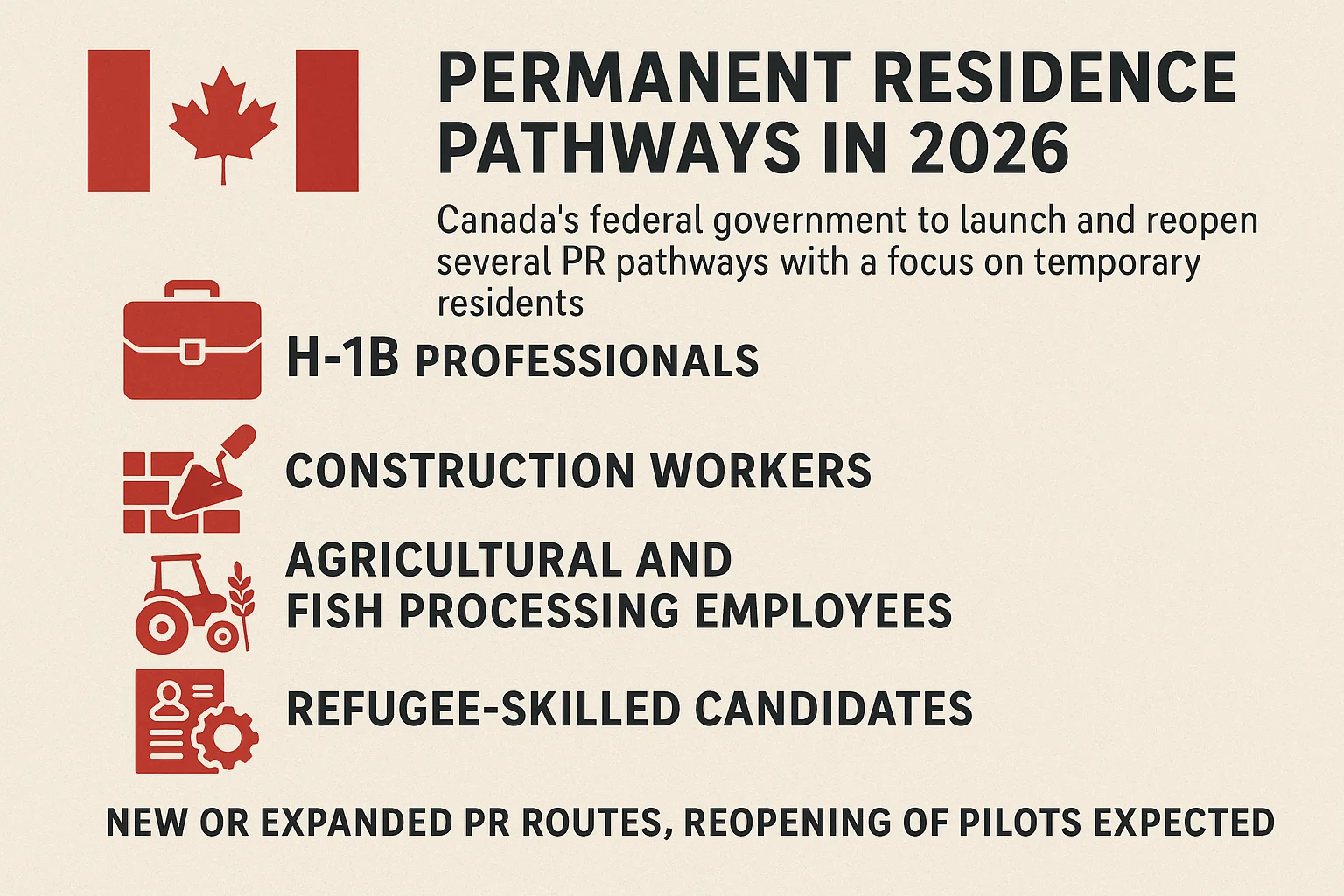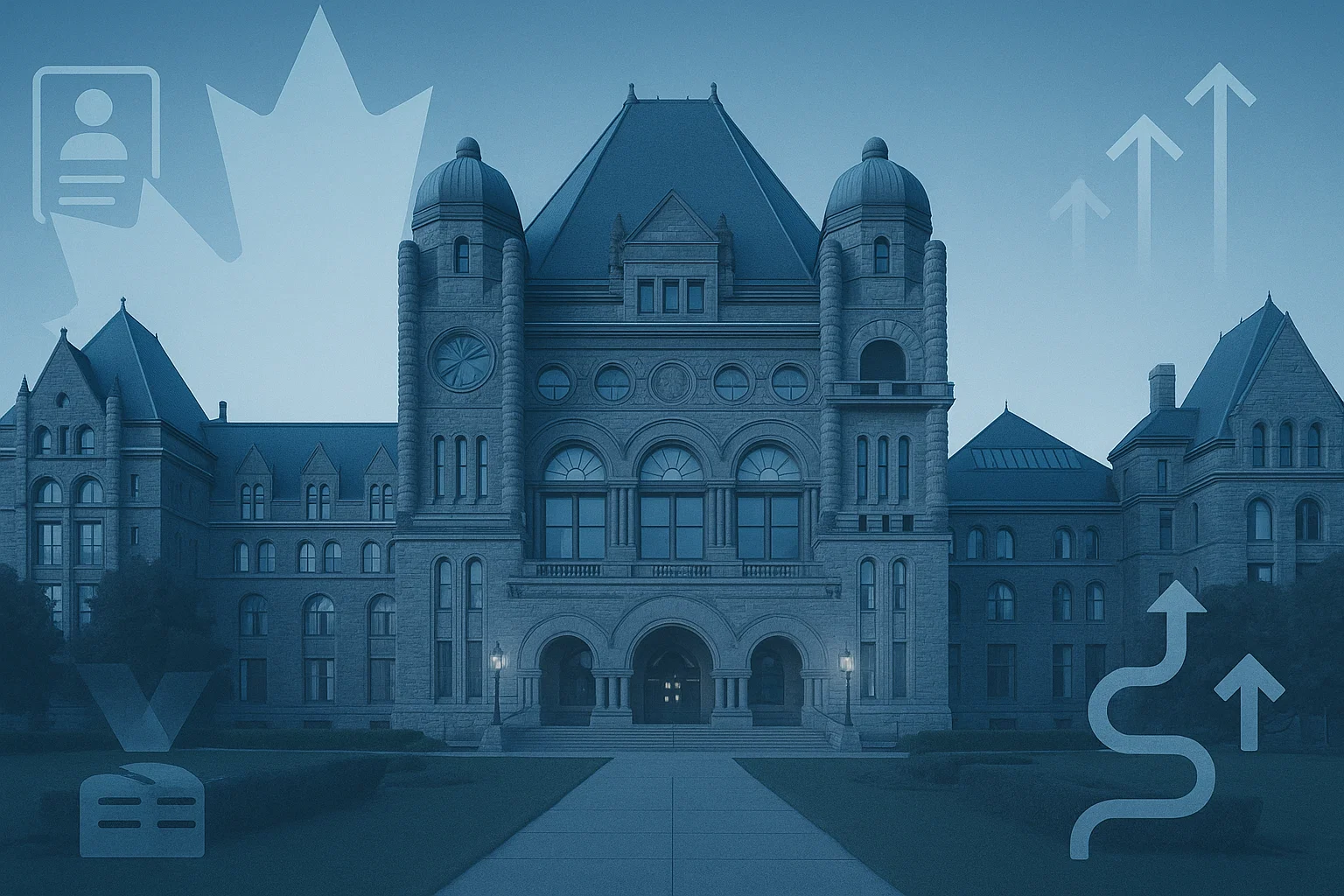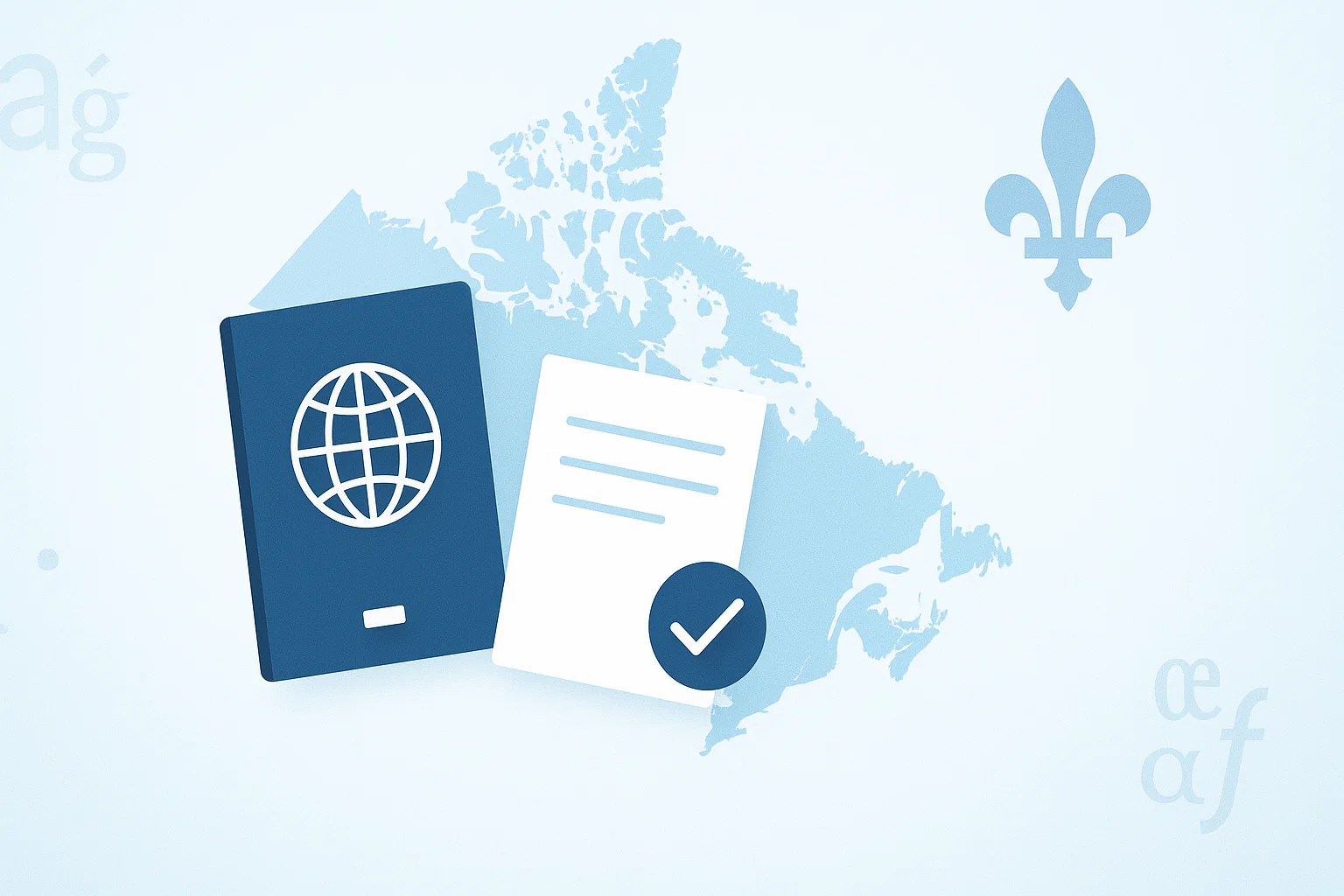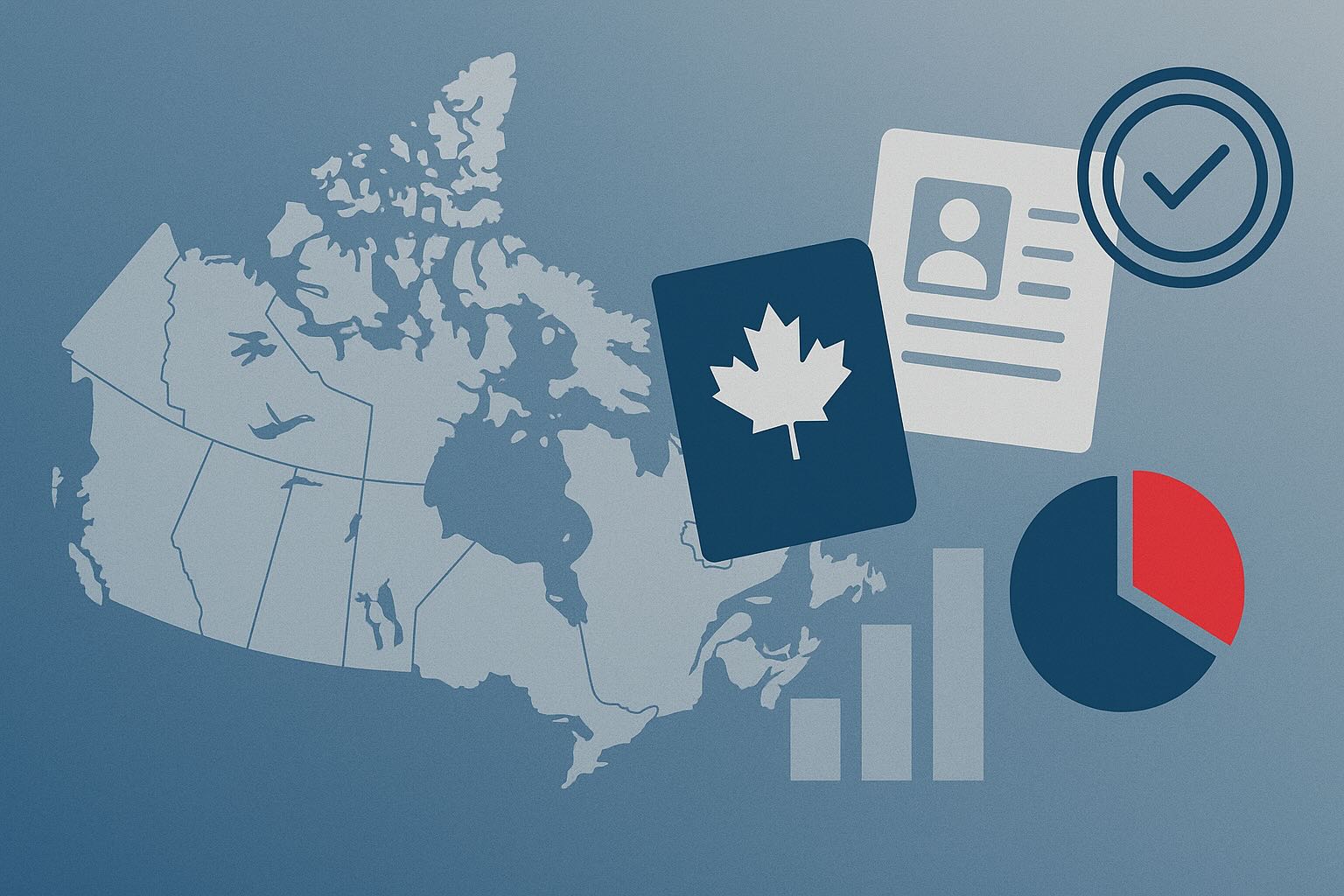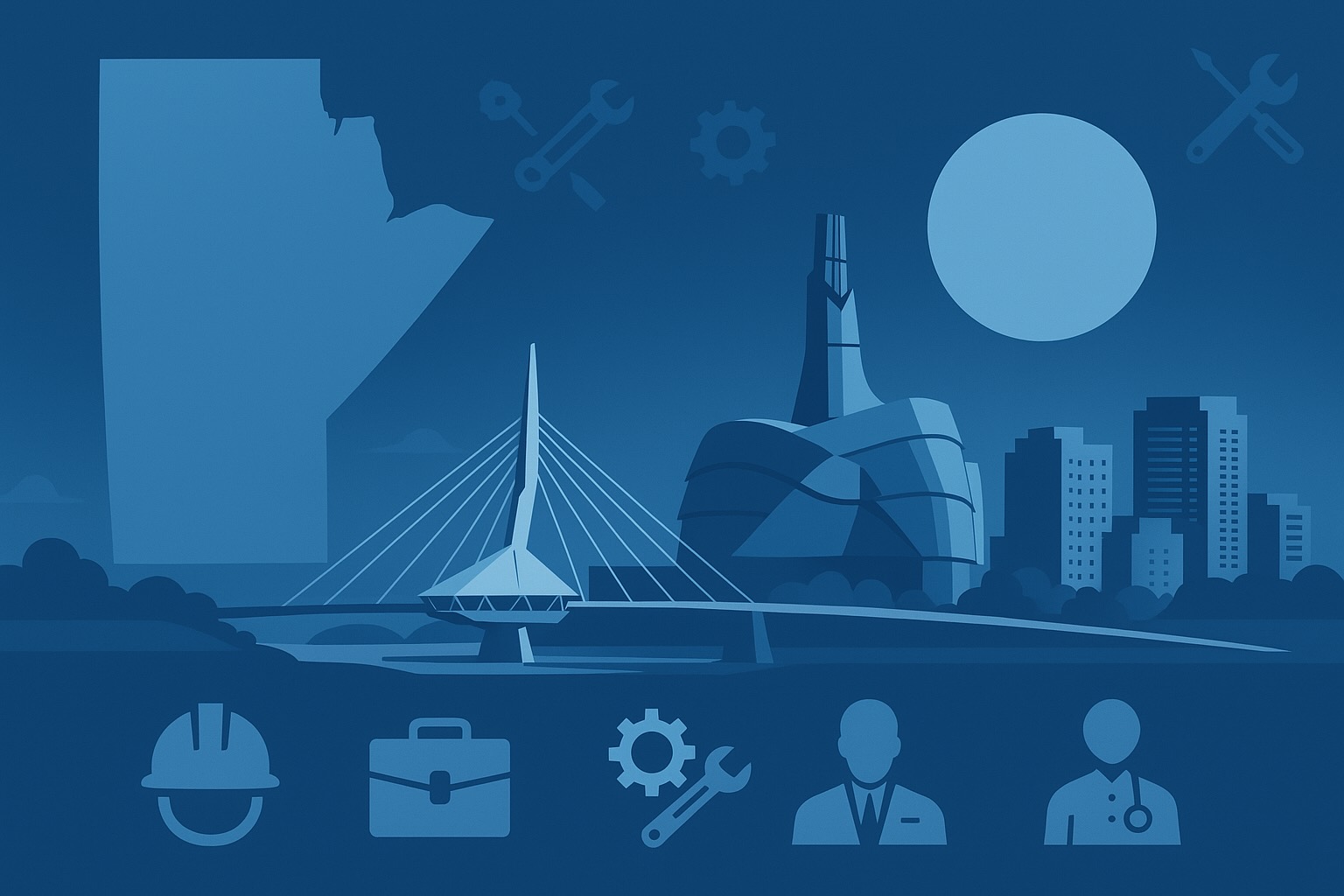Entering 2025, Immigration, Refugees and Citizenship Canada (IRCC) introduced a series of policy adjustments that have reshaped the country's immigration landscape. These changes affect not only permanent resident applicants seeking to settle in Canada but also have a direct impact on the large population of international students and temporary workers.
Macro-level Controls: Reduced Immigration Quotas and Caps on Temporary Residents
The shift in Canada's immigration policy is first reflected in its macro-level figures. According to the 2025-2027 Immigration Levels Plan released in late 2024, the federal government lowered its annual admission targets for permanent residents. In a more landmark development, IRCC set an annual target for the temporary resident population for the first time, aiming to reduce their share of the total population from 7.4% in October 2024 to 5% by the end of 2026.
Data shows that the growth rate of the temporary resident population had already slowed significantly in the second half of 2024. This trend reflects the federal government's clear signal to control population growth and alleviate pressure on social services like housing and healthcare. Furthermore, the policy specifies that over 40% of PR spots in 2025 will be allocated to workers and students already in Canada, underscoring the "in-Canada priority" principle.
Reform of Federal Flagship Program: Express Entry Rules Rewritten
As the core system for federal skilled immigration, Express Entry experienced transformative changes in 2025.
As of March 25, IRCC eliminated the additional points for Arranged Employment. Previously, an applicant with a job offer supported by a Labour Market Impact Assessment (LMIA) could receive 50 or 200 points, which was a near guarantee of receiving an invitation. This move has significantly altered the competitive landscape, giving renewed hope to high-scoring overseas applicants without Canadian employer support while also increasing the relative advantage of in-Canada applicants.
Additionally, Category-based Selection draws underwent major adjustments. IRCC added a new "Education" category (including 5 occupations) while removing the "Transportation" category. The lists of eligible occupations for existing categories—such as Healthcare, STEM, Trades, and Agri-food—also saw additions and removals. Notably, the STEM category had 19 occupations removed, while the Trades category saw 19 added. The priority categories for 2025 have been confirmed as: French-language proficiency, Trade occupations, and Healthcare and social services occupations.
Federal-Provincial Dynamics: PNP Allocations Halved and Strategies Adjusted
While the federal level tightened, provincial immigration programs also faced immense pressure. In 2025, the federal government cut allocations for the Provincial Nominee Program (PNP) by 50%.
In response to the drastic reduction in spots, provinces were forced to react. Provinces like Newfoundland and Labrador and New Brunswick successfully negotiated with the federal government for additional nomination spaces. Other provinces took stricter measures, including suspending some immigration streams, limiting application intake, and tightening eligibility criteria, to focus their precious allocations on the most critical sectors, such as healthcare and construction. Jurisdictions like Yukon and Newfoundland and Labrador also introduced new Expression of Interest (EOI) systems, replacing a previous model where eligible candidates could apply directly, thereby enhancing their screening capabilities.
New Opportunities Emerge: New Pilots and Targeted Pathways
While tightening some streams, IRCC also opened new, clearly targeted immigration pathways.
- Launch of Two Community Pilots: On January 30, the Rural Community Immigration Pilot (RCIP) and the Francophone Community Immigration Pilot (FCIP) were officially launched. The former aims to fill labor shortages in rural areas, while the latter serves the federal government's broader strategy to promote Francophone immigration outside of Quebec.
- New Pilots for Home Care Workers: Two new pilots for home care workers, targeting "Child Care" and "Home Support" providers, opened for applications on March 31. The in-Canada streams for these pilots were filled on the first day, reflecting huge demand.
- Agri-Food Pilot Closes: Meanwhile, the Agri-Food Immigration Pilot, designed to attract workers in agriculture and food processing, closed on February 13 after reaching its cap.
- Dedicated Pathway for Construction Workers Forthcoming: To address the housing crisis, the government has announced that a new permanent residence pathway for construction workers is in development. It is expected to admit up to 14,000 foreign construction workers and may provide a pathway to status for up to 6,000 undocumented construction workers already in Canada.
Comprehensive Tightening of Study and Work Permit Policies
For international students and temporary workers, 2025 has been a challenging year.
- New Study Permit Rules: IRCC set a processing cap of 550,000 study permit applications for 2025, with approved permits also dropping by 10% compared to the previous year. Master's and PhD students are now required to provide a Provincial Attestation Letter (PAL). Furthermore, international students must apply for a new study permit to switch institutions, unlike in the past when they could simply notify IRCC.
- Higher Bar for Spousal Work Permits: Spouses of international students are now only eligible for an open work permit if their partner is enrolled in a doctoral program, a specified professional degree program (e.g., law, engineering), or a master's program of at least 16 months. Spouses of temporary workers also face stricter requirements related to their partner's occupation level (TEER 0, 1, 2, or 3) and work permit validity.
- PGWP Adjustments: While the government removed the field-of-study restriction for graduates of college bachelor's programs applying for a Post-Graduation Work Permit (PGWP), it updated the list of eligible fields on June 25, adding 119 while removing 178.
Other Key Policy Updates
- Political Shifts: In March, economist Mark Carney became the new Prime Minister of Canada. His cabinet saw two changes in the role of Immigration Minister in short succession, signaling potential for further policy volatility.
- Extension of Temporary Public Policies: Special policies for PNP nominees, Ukrainian nationals, and Iranian nationals to extend their status or work permits were extended. The temporary policy allowing holders of employer-specific work permits to change employers while waiting for a new permit was also updated and made permanent.
- Citizenship Act Reform: The government introduced Bill C-3 to address the "first-generation limit" on citizenship by descent, allowing children of Canadians born abroad to inherit citizenship if they can demonstrate a "substantial connection to Canada."
- Quebec’s Independent Measures: As a province with its own immigration system, Quebec announced more aggressive reduction plans, suspended several immigration programs, and demanded that the federal government significantly reduce the number of International Mobility Program (IMP) work permit holders in the province.
In summary, the adjustments to Canada's immigration policy in the first half of 2025 clearly outline a more cautious, strategic, and domestically-focused future blueprint. For global applicants, this means a greater need to precisely align with Canada's priority needs and remain highly attentive to rapid policy changes.
